Occupational therapy for autism requires a specialized care approach. OT is designed to help you or your loved one with Autism Spectrum Disorder (ASD) by improving everyday life skills, sensory processing abilities, and social interactions. Techniques like Sensory Integration Therapy, Social Skills Training, and Visual Supports are often used. The goal is to incentivize self-confidence, independence, and better interaction with the world. Occupational therapy for autism can result in improved motor development, cognitive skills, and emotional regulation.
What Is Occupational Therapy For Children With Autism?
Occupational therapy (OT) can be a wonderful option for children with autism spectrum disorder (ASD), providing them with the tools to cultivate their daily living skills, improve social interactions, and have a level of independence. This therapy offers a unique and personal approach, focusing on improving your child’s ability to perform essential tasks such as dressing, eating, and playing.
Your child’s occupational therapist will work closely with your child to improve their fine motor skills, crucial for tasks such as writing, drawing, buttoning clothes, and tying shoelaces. This aspect of OT not only supports functional life skills but also aids in sensory integration, helping your child manage and respond to sensory input more effectively.
Communication skills are another crucial area addressed in OT, which is important for social interaction. Your child’s therapist will tailor activities to your child’s specific needs in order to improve their ability to express and understand language, thereby creating meaningful interactions and connections with others.
Does Your Child Need Occupational Therapy?
While it’s clear that occupational therapy can be highly beneficial for children with autism, you may be wondering if your child specifically needs this type of therapy. In many cases, early intervention is important, and that starts with recognizing the signs that your child may need occupational therapy.
Firstly, pay attention to your child’s developmental milestones. If your little one is struggling to achieve certain milestones, such as manipulating toys or responding to actions, occupational therapy may be beneficial. Parental involvement in recognizing these delays and addressing them is the best way to help the child catch-up.
Next, observe your child’s fine motor skills. Difficulty with strength and control during tasks such as writing or eating could indicate a need for therapy. Similarly, if your child is struggling to develop gross motor skills, such as running or jumping, professional help may be required.
Lastly, consider your child’s sensory integration. If they overreact to sensory inputs such as smell or touch, or constantly seek sensory stimulation, it could be a sign of a developmental delay. In these cases, occupational therapy can be a solution, helping your child navigate their world more comfortably.
If you ever wonder if you child could benefit from occupational therapy, the best option would be to see a therapist through a consultation and let them help you determine if OT is truly necessary.
Occupational Therapy Techniques Used for Individuals with ASD
You might be wondering, what specific techniques do occupational therapists use to help children with ASD?
There are many different techniques that therapists may use for children with ASD, but the exact techniques used will be determined by the needs of the child. There are, however, some general techniques and trainings that occupational therapists may use during their sessions with children with ASD.
Sensory Integration Therapy
Sensory Integration Therapy is designed for children who struggle to process sensory information from their surroundings.
If your child deals with sensory processing issues, this approach could be extremely beneficial. Sensory integration involves a range of sensory activities, customized to the unique needs and sensory challenges of your child. These activities might include swinging or playing with textured materials, helping them understand and respond to sensory input better.
Handwriting Training
Handwriting training is an effective occupational therapy technique that helps improve handwriting skills in children with ASD. Using a multi-sensory approach, this program combines sensory activities with motor skills development to aid handwriting improvement.
You’ll find that activities such as tracing letters in sand or forming letter shapes with play dough can greatly improve the handwriting and motor skills of your child. The multi-sensory approach guarantees that children learn in a way that best suits their individual needs.
Social Skills Training
Occupational therapy also offers social skills training to help individuals with ASD improve their interaction with others. This training focuses on enhancing communication skills and fostering better social interactions. It’s a valuable tool for addressing behavioral challenges and promoting emotional regulation.
Through role-playing exercises and discussions, your child will learn essential skills for managing peer relationships effectively. This training is especially important for children with ASD as many of them may struggle to connect and interact with their peers. Through training and practice, they can learn how to create meaningful relationships in school and in clubs or organizations they participate in.
Visual Supports
Visual supports include a variety of techniques occupational therapists implement that use pictures or symbols to help individuals with ASD better understand and interact with their environment. These visual strategies serve as effective communication tools, promoting independence.
Visual supports can make daily routines predictable and manageable. Picture schedules or charts can guide tasks such as brushing teeth or getting dressed. Behavior charts or social stories can help manage challenging behaviors, teaching appropriate responses. Images can also be used to express needs or emotions when words are difficult.
There are many examples of visual supports and your child’s therapist will be able to develop supports that are specific to the needs of your child to help them better understand their environment and how to navigate it.
The Benefits of OT for Children With Autism
OT focuses on improving your child’s motor development, cognitive skills, emotional regulation, social engagement, and mastery of daily activities.
Children with autism often face challenges with communication and interaction, limiting their activities and interests. OT can help expand these areas, focusing on play skills, fine motor skills, self-care abilities, and socialization.
By improving gross and fine motor skills, OT can enhance your child’s balance, locomotion, and control, which are skills that may be under-developed in children with ASD. Similarly, the therapy aids in developing fine motor skills necessary for tasks like holding a pencil or managing clothing fasteners.
OT can also improve executive functioning skills, like concentration and organization, essential for academic success and independent daily routines. Moreover, it can enhance visual motor skills, critical for tasks such as reading and handwriting. As a result, OT can greatly improve the quality of life for a child with autism.
The best part about OT is that the sessions are tailored to the needs of the child. If a child is more in need of improving their fine motor skills than improving their social skills, then the therapist will place more attention toward activities and sessions that focus on improving the fine motor skills. OT is not a one size fits all solution, it is important that your therapist truly understands the needs of the child and tailors the sessions to improving those under-developed skills.
Occupational Therapy for Children with Autism in Virginia
Millstone Therapy Group offers occupational therapy for children with autism in Virginia. Our therapy sessions and techniques are designed to set new standards in personalized, at-home care. We’re passionate about providing the best possible support to your child, tailoring our approach to their unique needs.
Through this personalized care, we incorporate:
1. Early intervention and sensory processing techniques. We believe in the power of early intervention, and use tools to help children better understand their sensory experiences.
2. Play therapy and behavior management strategies. Play is a powerful tool, and can be used to help manage behaviors and foster positive interactions.
3. The development of communication skills and fine motor abilities. We work to enhance both verbal and non-verbal communication, while also improving fine motor skills to enable better self-expression.
4. Self-care and independent living skills training. As part of our commitment to helping each child reach their full potential, we focus on teaching crucial self-care and life skills.
We also incorporate strategies such as a tailored sensory diet and school readiness programs. We’re dedicated to giving your child the tools they need to succeed, both now and into the future, all in the comfort of your home.









